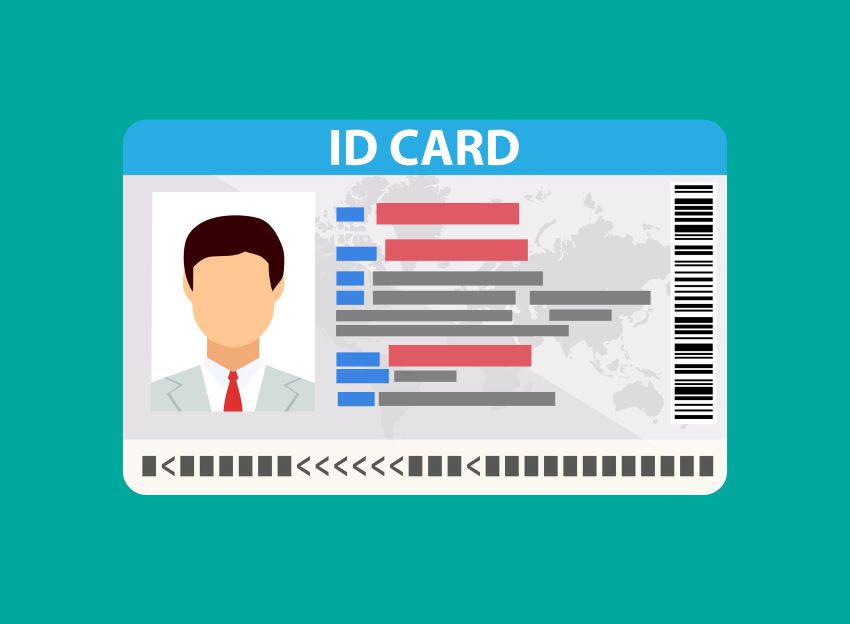A fake ID is a document that falsely represents an individual’s identity. It is often used by underage people to access alcohol, clubs, or age-restricted venues. Some individuals also use fake IDs to assume a false identity for personal reasons. However, obtaining a fake ID is illegal and can lead to severe legal consequences. This article will provide tips on how to get a fake ID and important things to consider before doing so.
Tips for Choosing a Reputable Source
When considering getting a fake ID, choosing a reputable source is essential to ensure you end up with a realistic-looking product. It is important to consider a few key factors when selecting a seller to increase the likelihood of obtaining a high-quality fake ID.
First, reputation is key. Look for sellers with positive online reviews and feedback from previous customers. You can easily find these by searching for forums where people discuss obtaining fake IDs or by asking friends who have successfully obtained one in the past.
In addition to researching a seller’s reputation, make sure to choose a seller who offers a product that has been carefully designed to include all the necessary security features such as holographic images, UV lights, and watermarks. This is essential to make sure the fake ID looks legitimate and is not easily detected.
Furthermore, consider the seller’s customer support, communication, and responsiveness. These are important factors to help ensure that the product will be delivered successfully and on time without any issues.
Types of Fake IDs
Obtaining a fake ID can be a tricky and risky business. However, for many people, it’s an essential item to have for access to activities reserved for those who are legally of age. In this article, we will be discussing the different types of fake IDs that are typically available and what to consider when choosing one.

Credit Card
For those looking to obtain a fake ID, credit cards can be a useful resource to help create a convincing form of identification. When creating a fake ID, one of the essential elements to include is a holographic image and a professional laminate to provide an extra layer of authenticity. Properly utilizing a credit card as a form of identification requires a sound understanding of specific elements, including card layout, card thickness, and surface texture.
To create a fake credit card, it is crucial to obtain all the necessary information about the individual who the fake ID is for, such as their birth month. This information can be obtained through a variety of methods, including social media profiles, online sources, or even through a chain of people. Once you have obtained the necessary information, it is essential to select the correct type of credit card to use as identification. Different credit cards, including alien cards and armed forces identification cards, can be used to create a fake ID.
When encoding the information onto the fake credit card, it is essential to ensure that the finished product has a professional and believable finish. Utilizing tools like laser embossing can help to create a genuine-looking identification document. It is also vital to ensure that the card has a proper background image and that there are no blurry images or duplicate stamps on the card.
When attempting to use a fake credit card as a form of identification, it is crucial to remain aware of potential red flags, including suspicious behavior or a lack of proper eye contact. While using a fake credit card as identification can provide access to alcohol or other age-restricted products or activities, it is essential to note that the sale of alcohol to minors may have serious consequences, including alcohol poisoning and legal trouble for both the vendor and the individual attempting to use the fake ID.
Social Security Card
Obtaining a fake social security card is a common tactic used to establish a false identity in conjunction with a fake ID. The process of obtaining a fake social security card involves acquiring the necessary information about an individual, such as their name, date of birth, and social security number. This information can be obtained through a variety of methods, including online sources, through the use of a chain of people, and even directly from the individual themselves.
Once the necessary information has been obtained, the production of a fake social security card can be achieved through various means. These methods include using sophisticated software to create a counterfeit card with a professional laminate and utilizing cheap laminates or even butterfly laminate pouches. Some individuals may also resort to altering an existing social security card with the use of direct light or ultraviolet light.
While obtaining a fake social security card may seem like a quick and easy solution to establish a false identity, there are significant consequences to consider. The use of a fake social security card is a violation of federal law and can result in legal repercussions such as fines and imprisonment. Additionally, the use of a fake social security card can damage one’s credit and financial history.
It’s important to avoid the use of fake social security cards and instead, obtain a government-issued ID through legal means. Government-issued IDs, such as driver’s licenses or passports, provide the necessary identification for various situations such as accessing financial services or purchasing alcohol.
Holographic Image
When it comes to identifying fake IDs, one of the most important features to consider is the presence of a holographic image. This security feature is designed to deter forgers by creating a visually striking and complex image that is difficult to reproduce accurately. Unfortunately, some ambitious counterfeiters may still attempt to reproduce this feature, so it is wise to know how to identify a legitimate holographic image.
The first thing to look for in a holographic image is the presence of a light-refracting, 3D image. Many state IDs have a hologram of their state seal or another recognizable image, while others have a holographic overlay across the entire card. These images can be difficult to reproduce precisely, so checking for a 3D effect is crucial in determining authenticity.
To further ensure the authenticity of a holographic image, you can also examine it with ultraviolet light. It’s common for IDs to have additional security features that are only visible under UV light, such as a second, separate holographic image. This could be the state seal, an encoded number, or other pertinent information that should be specific to the ID you are examining.
Some states use a blacklight image instead of a traditional holographic image. In these cases, the image will only be visible under blacklight, making it an effective security feature. It’s a good idea to familiarize yourself with the different images used by each state, as well as the current state seal or phrase. This way, you’ll be better equipped to identify a fake ID that tries to imitate these features.
Overall, the holographic image is an essential security feature in many state-issued IDs. By checking for the 3D effect, examining under UV light and black light, and familiarizing yourself with the specific holographic images used by each state, you can help ensure the authenticity of IDs and prevent fraud.
Professional Laminate
When it comes to creating a reliable and realistic fake ID, one crucial element that significantly impacts the card’s quality is the professional laminate. The laminate is an extra layer applied to the card that protects and secures the surface texture, holographic images, and ultraviolet imagery. Counterfeiters must use a professional laminate when creating fake IDs to make them look authentic and credible.
A professional laminate serves as a protective barrier for the ID, preventing it from wear and tear due to frequent usage or physical damage. It also keeps the ultraviolet imagery intact and prevents it from fading or degrading over time. The professional laminate ensures that even if the card comes into contact with liquid or moisture, the surface will not be damaged, and the card will remain intact.
One way to test the quality of the professional laminate used in creating the fake ID is to check its thickness. A high-quality laminate will have a thickness of around 1-2 millimeters and is tough, durable, and hard to peel. Additionally, a good quality laminate allows for the correct placement of images and characters on the surface, making it easier to check if the ID is real or fake.
It’s important to exercise caution before using a fake ID for anything other than novelty or entertainment purposes, as this could lead to serious consequences. Access to alcohol, firearms, and other restricted goods can be dangerous and can lead to legal repercussions if caught. It is always best to use fake IDs for fun and entertainment purposes only and not for illegal activities.
Laser Embossing
Laser embossing is one of the most popular methods used in creating fraudulent IDs. This process creates raised lettering or designs on the front of a state’s ID through the use of laser technology. Laser embossing can create high-quality and precise impressions that are very difficult to detect with the naked eye.
The process of laser embossing involves using a high-powered laser to create a relief on the surface of the ID. The laser heats the surface of the ID, melting the material in the desired pattern, and then hardening it almost instantly, creating raised lettering or images. This process is used to create features that conform to the standards of a genuine state ID.
The presence of laser embossing can be felt by running your finger over the surface of the card. When you run your finger over the embossed area of the ID, you can feel the raised lettering or design. This can be checked against a genuine state ID to verify its conformity to standards.
It should be noted that the back of the ID remains unchanged during the laser embossing process. The back of the ID usually contains a magnetic strip or other security features that are difficult to replicate. Therefore, most counterfeiters focus on replicating the front of the ID to bypass security checks.
Create a Fake ID
Making a fake ID is illegal and can have serious consequences if caught. However, if one still insists on obtaining a fake ID, there are certain factors to consider to ensure that the ID is convincing and not easily detected by authorities. Here are some tips to get a fake id.

Common Type of Plastic Used for Crafting Fake IDs
When it comes to crafting fake IDs, the choice of plastic is critical in replicating the look and feel of a genuine identification document. The most commonly used type of plastic for creating fake IDs is Teslin paper. Teslin is a type of synthetic paper that is widely used by state governments for their identification cards. It is durable, flexible, and water-resistant, which makes it ideal for creating fake IDs that are difficult for authorities to detect.
One of the key advantages of Teslin paper is its durability. It does not tear easily and can withstand heavy usage, which is important for individuals who plan on using their fake IDs regularly. Additionally, Teslin is highly flexible, allowing it to be easily molded and shaped to match the size and shape of a real ID.
To create the holographic image found on most IDs, butterfly laminates are commonly used. These laminates come in different thicknesses, ranging from 3 to 10 millimeters, and are used to laminate the Teslin paper to match the thickness and feel of an authentic ID. The butterfly laminate adds an extra layer of security and makes it more difficult for authorities to detect that it is a fake.
Light Sources Needed to Create Holographic Images
When it comes to creating holographic images for fake IDs, light sources play a critical role in determining the overall appearance and authenticity of the ID. The right light source can make all the difference in creating a convincing and realistic holographic image.
Different light sources have varying effects on holographic images. Direct light, for example, can reveal the surface texture of the butterfly laminates used to create the holographic image, as well as any imperfections in the laminate. Ultraviolet (UV) light, on the other hand, is often used to reveal hidden security features, such as duplicate stamps or watermarks, that are invisible under normal lighting conditions.
Here are the top 5 most commonly used light sources when creating holographic images on fake IDs:
1. UV flashlight: This handheld device emits UV light, allowing you to examine your fake ID under this specific light spectrum. This is useful for ensuring that all the security features are in place and that the ID will pass inspection in a variety of environments.
2. Direct light source: This is a straightforward option that involves holding your fake ID up to a light source, such as a lamp or overhead light, to examine its holographic image and surface texture.
3. Butterfly laminates: These are thin plastic sheets that have been laminated together to create a multi-layered effect. Butterfly laminates come in different thicknesses and are typically used to create the extra layer needed to produce an authentic-looking holographic image.
4. Butterfly laminate pouches: These are pre-cut sheets of butterfly laminate that can be easily applied to an ID to create a holographic image. They come in different sizes and thicknesses and can be purchased online or at specialty retailers.
5. Extra layer: This refers to any additional layer of material that is added to the butterfly laminate when creating a holographic image. This extra layer can be a thin layer of plastic or any other material that can give the ID the fake hologram look.
Duplicate Stamps and Other Tools Necessary for Making an ID Look Professional
Creating a professional-looking fake ID requires more than just a high-quality printer and laminator. In addition to these two essential tools, there are other items necessary to make a convincing fake ID. One such tool is the duplicate stamp.
A duplicate stamp is crucial for replicating the raised letters and numbers that appear on a genuine ID. These embossed-looking characters are a distinguishing feature of a genuine ID, and without them, a fake ID is easily spotted. However, with the use of a duplicate stamp, a fake ID can have this authentic look.
Craft stores or online retailers offer sets of letters and numbers that can be used with an adhesive ink pad to create embossed-looking text on your ID. These stamps are available in various fonts, sizes, and styles, so you can choose the one that best matches the font on your chosen ID template.
In addition to a duplicate stamp, you will also need a pair of scissors or a paper cutter for trimming the card to the correct size. It is important to measure the size of a genuine ID and ensure your fake ID matches these dimensions as closely as possible. For accurate measurements, a ruler is necessary.
Finally, a black light and/or a magnifying glass are important tools to have to ensure that the holographic images and other security features are aligned properly and not blurry. The black light is especially useful for checking the UV features on the ID. This will further add to the authenticity of the ID and help eliminate suspicions from any potential authorities.
Online Sources to Avoid when Purchasing a Fake Identification Card
When it comes to purchasing a fake identification card online, it’s important to be cautious and avoid certain sources. There are many scams out there, and falling for one can lead to legal trouble or, at the very least, being ripped off.
One of the first things to be wary of is any website that claims to sell fake IDs. These sites are often just fronts for scammers who are looking to take advantage of unsuspecting individuals. To avoid getting caught in a scam, it’s important to look for websites with good reviews and a history of providing quality products.
Another red flag to watch out for is websites that ask for payment upfront or require personal information to be provided before the purchase is completed. Shady websites may try to manipulate you into providing your credit card information or other sensitive details before they even prove that they can deliver a high-quality fake ID. Be extra cautious when providing any personal information online, and never give out your financial information until you’re certain that the website is legitimate.
Poor-quality photos of fake IDs and vague, incomplete explanations of products are also warning signs to look out for. If a website is unwilling or unable to provide clear pictures or descriptions of its fake IDs, the quality of its products is likely questionable at best.
To reiterate, buying a fake ID online can be a risky proposition, but it’s not impossible to find a reliable source. Just be sure to pay attention to certain warning signs and do your research carefully. Sticking with reputable sources that have a proven track record is the best way to ensure that you stay safe and avoid being scammed.
Chain of People Involved in Selling Illegal Identifications
The manufacture and distribution of illegal identifications involve a whole chain of people, from the manufacturers to the distributors and buyers. The process begins with the manufacturers who are often located overseas in countries with lax regulations. These manufacturers operate in secret and use sophisticated printing technologies to create fake IDs that are nearly indistinguishable from real ones.
Once the fake IDs are produced, they are then passed on to middlemen who act as intermediaries between the manufacturers and smaller-scale distributors. These middlemen are also involved in producing fake IDs on a smaller scale in some cases. They may operate in cities or towns and are generally connected to the market of buyers such as college students.
The smaller-scale distributors are then responsible for selling the fake IDs to the end users/buyers. These distributors are often young entrepreneurs who operate in college towns and other areas with a high concentration of college students. They usually advertise in discreet ways and reach out to potential buyers through social media and other online platforms.
Finally, the buyers themselves complete the chain of people involved in the illegal identification trade. These buyers are often college students or underage individuals looking to purchase alcohol or gain access to bars and clubs. They may also be individuals seeking false identification to gain employment illegally, or for other reasons that require them to assume a false identity.
Eye Contact and Surface Texture Checks are Employed by Retailers when Verifying an ID’s Authenticity
When it comes to verifying the authenticity of an ID, retailers use various techniques to ensure that they are not selling alcohol or granting access to minors with fake identification. Two essential techniques that retailers employ are eye contact and surface texture checks.
Eye contact is crucial in verifying an ID because it allows retailers to match the person standing in front of them with the photo on the ID. Retailers must ensure that the individual making the purchase is confident and makes adequate eye contact. If the individual avoids eye contact or seems nervous, it can signify that the ID is not authentic.
In addition to eye contact, retailers also employ surface texture checks to identify possible tampering or forgery. Retailers run their fingers over the ID’s surface to check for any bumps or irregularities, including variations in texture or thickness. These irregularities can often signify that the ID is fake. Other markings on the ID, such as blurred text or images, can also indicate a fake ID.
Retailers must be vigilant when conducting these checks to ensure that alcohol is not sold to minors. Employing both eye contact and surface texture checks significantly increases the likelihood of retailers identifying a fake ID. Ensuring that the identification provided by the customer is genuine is essential for keeping alcohol out of the hands of minors and upholding the law.
Conclusion
In conclusion, obtaining a fake ID is a serious offense that can have severe consequences, including being denied access to alcohol or facing legal repercussions. It is vital to be careful and choose a reputable source when attempting to make or buy a fake ID.










